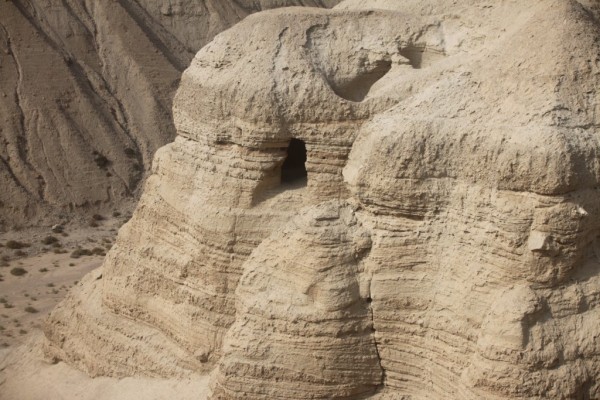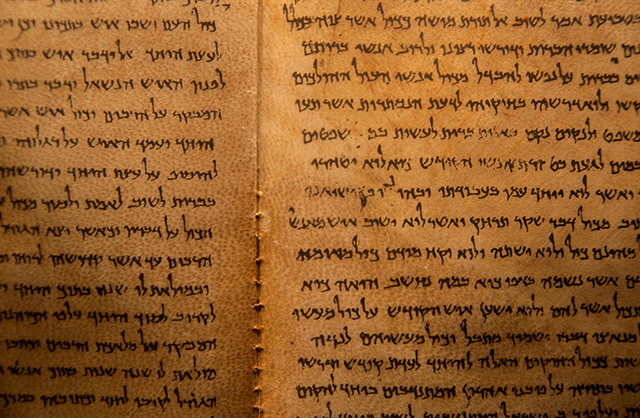Surprising discovery made by archaeologists, as 12th Dead Sea Scroll cave uncovered
02/15/2017 / By Tracey Watson

Somewhere late in 1946 or early 1947, three Bedouin shepherds, Muhammed edh-Dhib, Jum’a Muhammed and Khalil Musa, accidentally made one of the greatest archaeological discoveries of all time. While searching for a lost goat, they discovered seven scrolls in jars in a cave at Khirbet Qumran, about 1.2 miles inland from the northwestern shore of Israel’s Dead Sea.
The Bedouin, unsure of what to do with their discovery, kept the scrolls hanging on a tent pole for a time, and then eventually sold them to various dealers. Later that year, the scrolls came to the attention of Dr. John C. Trever of the American Schools of Oriental Research (ASOR), and in April 1948, Millar Burrows, the head of the ASOR, announced their discovery to the world in a press release.
Scholars searched for many months, but could not locate the site of the original cave until 28 January, 1949. Excavations officially began in 1951 and continued until 1956.
Archaeologists discovered a treasure trove of 981 ancient manuscripts, 230 of them being partial or complete copies of every book of the Hebrew Scriptures (Old Testament), except for the book of Esther. The scrolls date from the 3rd century B.C.E. (before our common era, or before Christ) to the 1st century C.E. (our common era). They are mainly parchment, which makes their survival even more amazing, though the text of one scroll is engraved on copper.
The scrolls include the oldest group of Old Testament manuscripts ever found.
For many years, it was believed that the 11 caves uncovered in the 1950s were all there was to find at Qumran. That is, until archaeologists discovered a 12th cave this year, which will now be known as Q12.
Archaeologists from the Hebrew University of Jerusalem’s Institute of Archaeology, as well as Dr. Randall Price and some of his students from the University of Virginia, U.S.A., made the exciting discovery of a blank scroll, the remains of some broken jars, as well as cloth and a leather strap, which the researchers believe were used to bind the scrolls. Unfortunately, they did not discover any ancient manuscripts; the cave had clearly been looted, as evidenced by the fact that they found modern pickaxes that the thieves had obviously abandoned in the cave.
The cave is similar in this regard to the 8th Qumran cave, which had also been looted and was found to contain jars, but no scrolls. (RELATED: For more information on the Dead Sea Scrolls, check out this search at GoodGopher.com)
“This exciting excavation is the closest we’ve come to discovering new Dead Sea scrolls in 60 years, ” said Dr. Oren Gutfeld, an archaeologist with the Hebrew University’s Institute of Archaeology, and director of the excavation. “Until now, it was accepted that Dead Sea scrolls were found only in 11 caves at Qumran, but now there is no doubt that this is the 12th cave.
“Although at the end of the day no scroll was found, and instead we ‘only’ found a piece of parchment rolled up in a jug that was being processed for writing, the findings indicate beyond any doubt that the cave contained scrolls that were stolen. The findings include the jars in which the scrolls and their covering were hidden, a leather strap for binding the scroll, a cloth that wrapped the scrolls, tendons and pieces of skin connecting fragments, and more.”
Israel Hasson, director-general of the Israel Antiquities Authority, stressed that the discovery of the 12th cave at Qumran is important in that it shows just how much more work still needs to be done in the Judean desert, and that there are potentially very important discoveries yet to be made.
“We are in a race against time as antiquities thieves steal heritage assets worldwide for financial gain,” he said. “The State of Israel needs to mobilize and allocate the necessary resources in order to launch a historic operation, together with the public, to carry out a systematic excavation of all the caves of the Judean Desert.”
Sources:
Tagged Under: Archaeology, Dead Sea Scrolls, discoveries, history



















